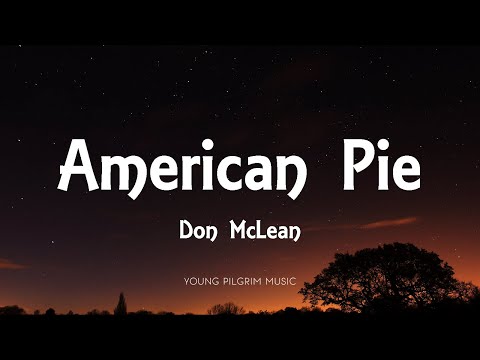As a writer, I love to study literature and other art-forms to inspire my own work.
And if you’re a voracious reader like me, you’re bound to run into allegories.
In this article, I’d like to explore some famous allegory examples from literature, movies, and music.
And along the way, you’ll also learn:
- A simple, straightforward definition of allegory
- The 4 types of allegory
- Related literary devices (like parable and symbolism)
- And exactly why writers use allegories in the first place
So if you’re looking for a famous example to help you get the hang of this literary device, or you’re curious how allegories can help you weave wondrous tales and create cunning content, then you’re in for a treat.
Let’s kick things off with a simple definition, shall we?

Allegory Definition
The historic allegory definition stems from the ancient Greek word, ἀλληγορία, meaning other speak.
Today, we know allegory as a long-held literary device that distills complex ideas into a simple, accessible story. Think of allegory as a double meaning or even an equation:
Literal meaning + Hidden meaning = Allegory
Figurative language, like metaphor, personification, and simile, helps convey an allegory’s deeper meaning. However, symbolism reigns in allegory with characters, action, even setting becoming fair game.
You can use allegory in two ways:
1) Historical allegory masks actual events or people for socio-political commentary.
For example: Jonathan Swift’s Gulliver’s Travels is a covert criticism of British politics.
2) Conceptual allegory buries an abstract idea, philosophy, and morality within a story.
For example: In The Faerie Queene, Edmund Spenser uses personification to turn virtues into knights.
4 Types of Allegory
Now that you know the definition of allegory and how to use it, let’s discover the different types.

1. Classical Allegory
Classical allegory began in ancient Greek and Roman times to teach morality, ethics, and philosophy. Think of myths and Aesop’s Fables as prime examples of allegory.
Or take Platos Allegory of the Cave where an escaped but enlightened prisoner returns to his former cave to free the captives he left behind. But they refuse to leave the only reality they know.
Plato’s message is clear: it’s impossible to teach wisdom.
2. Biblical Allegory
One biblical allegory definition is a biblical story conveying religious teachings.
But it’s also any literature using religious allegory to symbolize spiritual meaning. Biblical allegory examples in literature include:
- John Bunyan’s, The Pilgrim’s Progress
- William Golding’s, Lord of the Flies
- C S Lewis’, The Chronicles of Narnia
In The Chronicles of Narnia, Aslan is a symbolic Christ figure who dies for another’s sin, then resurrects to become king.
3. Medieval Allegory
Medieval allegory promoted Christianity through poems and art in the Middle Ages.
Take The Divine Comedy. Dante’s passage through hell, purgatory, and heaven means spiritual elevation through Christian faith.
4. Modern Allegory
Though modern allegory is an allegory created in recent times, it also extends to works that weren’t intended as such, but are open to allegorical interpretation.
For example, J. R. R. Tolkien’s The Lord of the Rings is seen as a fight between good and evil during the two world wars.
Author Nathaniel Hawthorne used allegory often. He depicted human beings’ immorality in Young Goodman Brown. And The Scarlet Letter is a commentary on American society’s puritanical hypocrisy.
Other famous examples of modern allegory include Arthur Miller’s The Crucible to comment on McCarthyism, and in Edgar Allan Poe’s, The Masque of the Red Death, Poe uses allegory to express his views on the impossibility of escaping mortality.
Now let’s claim your treasure and explore allegory examples in movies, TV, literature, and music.
Examples of Allegory in Literature
To help you understand allegory examples in literature, we also summarize each work, so… spoiler alert!
1. Animal Farm by George Orwell
Anthropomorphic farm animals fight for freedom and equality, form a new society, struggle for power, and eventually fall under dictatorship.
Symbolism: The pig characters, Snowball and Napoleon, are allegorical figures for Leon Trotsky and Joseph Stalin.
Hidden meaning: Orwell wrote Animal Farm as a political allegory for the Russian revolution.
Related Reading: 9 Anthropomorphism Examples (+ Writing Tips & Video Clips)
2. The Metamorphosis by Franz Kafka
Gregor Samsa awakens one morning to find himself transformed into a huge bug. His family rejects, neglects, and finally abandons him until he dies alone.
Symbolism: The character of Samsa symbolizes the misunderstood artist and his family is an allegorical figure for society.
Hidden meaning: Though there are many allegorical interpretations to this fantastic tale, one reading is that non-conformity can lead to social alienation.
3. Moby Dick by Herman Melville
Captain Ahab is obsessed with Moby Dick, a great yet elusive white sperm whale. When he finally captures his prey, the beast destroys Ahab and his boat.
Symbolism: Ahab represents the destructive force of human nature. And the great white whale symbolizes the slippery nature of the unknown.
Hidden meaning: The obsession for the unattainable, like power, wealth, or supreme knowledge, leads to self-destruction. It can also be a great allegorical read for climate change.
Related Reading: 20 Metonymy Examples That Will Sweep You Off Your Feet
Examples of Allegory in Movies & Television
4. Inside Out
Pre-teen Riley struggles with conflicting emotions after she moves with her family to San Francisco.
Symbolism: Major characters like Joy, Sadness, Anger, Fear, and Disgust are personifications of Riley’s emotions.
Hidden meaning: When you work with all of your emotions instead of fighting them, you can achieve mental wellbeing.
Check out a clip from the movie here:
5. Gravity
Two astronauts stranded in outer space struggle to return to Earth after their spaceship is damaged.
Symbolism: Tethers are umbilical cords, space capsules are wombs, and the void of space acts like a literal tabula rasa.
Hidden meaning: Director and co-writer Alfonso Cuarón, infused this sci-fi flick with so much symbolism that it travels far beyond his original idea of a film on adversity. One of the best allegory examples in movies, Gravity can be a message of rebirth or humanity’s emotional evolution.
Don’t believe it? Check out its epic last scene:
6. Game of Thrones
The saga of families and factions battling for power while staving off supernatural threats.
Symbolism: White Walkers, Children of the Forest, and the famous line, “Winter is coming,” all represent man versus nature.
Hidden meaning: Author George R. R. Martin says both his books and HBO series are allegories for climate change.
Pretty cool, huh? You’ll probably never look at GoT the same way again.
7. Lost
Survivors of an airplane crash are stranded on a mysterious island with supernatural happenings.
Symbolism: Lost is rich in contrasting symbolism, like Jacob vs the man in black or John Locke’s light and dark players in his backgammon game:
Hidden meaning: You can see Lost as the fight between free will vs destiny or good vs evil. Or it could symbolize misguided people searching for themselves.
Examples of Allegory in Music
8. Bohemian Rhapsody – Freddy Mercury (Queen)
Bohemian Rhapsody is a mishmash of a cappella, folk, hard rock, and opera music tied together with ambiguous lyrics. And it’s probably the best example of allegory in music.
Hidden meaning: Many speculate that the cryptic Bohemian Rhapsody is Freddie Mercury’s coming-out song.
Listen to the song (you know you want to). But this time, think about the alleged allegorical meaning:
9. American Pie
Buddy Holly’s death inspired Don McLean to write this epic 8-minute melody.
Hidden Meaning: To McLean, American Pie meant not just a music era dying, but the demise of the American dream.
10. Total Eclipse of the Heart
If you first heard the 1980s Bonnie Tyler version, you would think this romantic tune is about heartbreak…
Hidden meaning: It’s about vampires. Really. Composer Jim Steinman originally wrote it for an unproduced musical on Nosferatu, then later used it for his Broadway musical Dance of the Vampires, renaming the song Vampires in Love.
Why Use Allegory in Writing?
Throughout the ages, allegories have allowed artists to hide behind a shield of ambiguity while they brandish a sword of scathing criticism to comment on society and politics, or reveal truths about human nature.
But why use allegory today?

Whether you want to criticize society or share insights into the human condition, you can use allegory for many reasons:
- Paint a vividly profound picture to make your story memorable. Who can ever forget Animal Farm or The Metamorphosis?
- Transform complex ideas into easy-to-understand truths (think Platos Allegory of the Cave).
- Share potentially controversial subjects, concepts, or opinions indirectly. Bohemian Rhapsody, anyone?
- Create distance between you and your ideas so you don’t come off sounding like a stuffy ole bore. What if ‘Game of Thrones’ debuted as ‘The Perils of Climate Change’….?
- Make your voice heard and get your words published. “Let’s do an animated film on the psychological repercussions of ignoring your emotions,” Pixar said, never.
Now that you’ve explored the mythical underworld of allegory and absorbed its language, let’s compare figures of speech so you can transform into a true allegory master.
Related Literary Terms
Allegory wields a variety of literary and rhetorical devices, like symbolism, metaphors, and parables, to convey its hidden messages.
But the fundamental difference is this: an allegory is a complete work of art, whereas most figures of speech are the building blocks of a story’s foundation.
Let’s shed some light on literary terms commonly confused with allegory.
Allegory vs Symbolism
Symbolism injects symbolic value into a character, object, action, idea, or setting.
Like allegory, symbolism can span an entire work of art, from start to finish. However, it plays a minor role in conveying a work’s major concepts.
For instance, take Gravity and its hidden rebirth meaning. At one point, Bullock’s character sheds her spacesuit and floats into a fetal position, symbolizing a child in the womb.
While all allegories rely heavily on symbolism, not all writing that uses symbolism is an allegory.
Learn more here: 20 Symbolism Examples to Enrich Your Writing (+ Related Terms)
Allegory vs Metaphor
A metaphor compares two disparate ideas to create a new meaning.
What do the words, a total eclipse of the heart, make you think of? This metaphor example may conjure an image of darkness shadowing not just love, but life. One line of metaphor helps to convey the song’s vampire allegory.
To distinguish the two, think of an allegory as one long, extended metaphor, stretching through the entire story, from start to finish.
Learn more here: 57 Metaphor Examples That’ll Pack Your Prose With Persuasion
Allegory vs Parable
Allegories and parables are very similar because they both have two layers of meaning and are complete stories. But here’s how the parable differs from allegory:
- Less symbolism.
- More straightforward.
- Obvious moral or lesson at the end of the story.
- Very short story, sometimes a few lines.
A great way to remember parables is to think of Aesop’s, The Boy and The Wolf. A bored shepherd boy cries “wolf” as a joke, but the hoodwinked villagers catch on to his lies and ignore him when the real wolf shows up.
Moral of the story: No one will believe a liar even when they tell the truth.
Remember, an allegory is more subtle and difficult to interpret than a parable.
Awaken The Storyteller in You With Allegory Examples
Whether you’re a blogger, freelance writer, or novelist, you’re always the hero of your creative writing journey.
And now, equipped with a trove full of allegory examples, you’ll be a wizard in crafting cathartic content.
Soon you’ll be weaving words into wonders of wisdom.
You’ll craft multi-layered stories that will leave readers awestruck.
Above all, you’ll possess the confidence to leave your familiar world behind and write inspiring allegories of life-changing truths.












